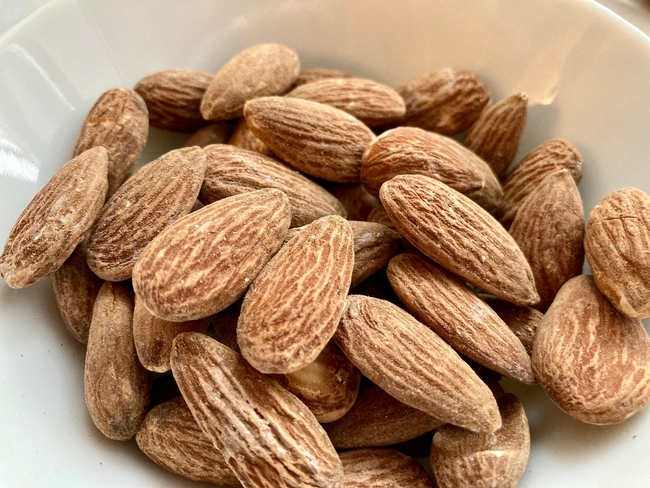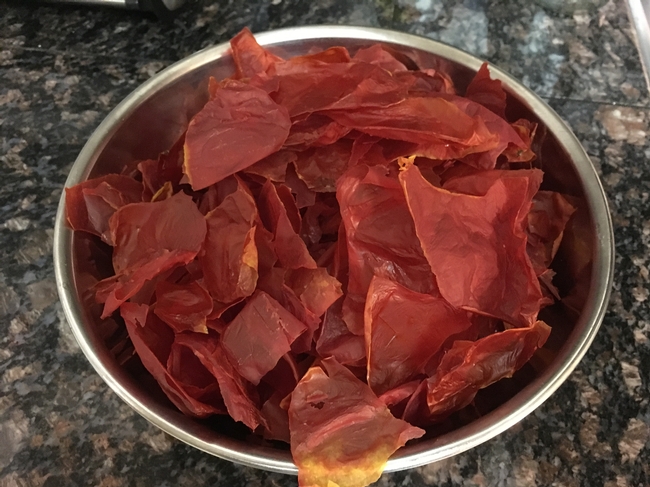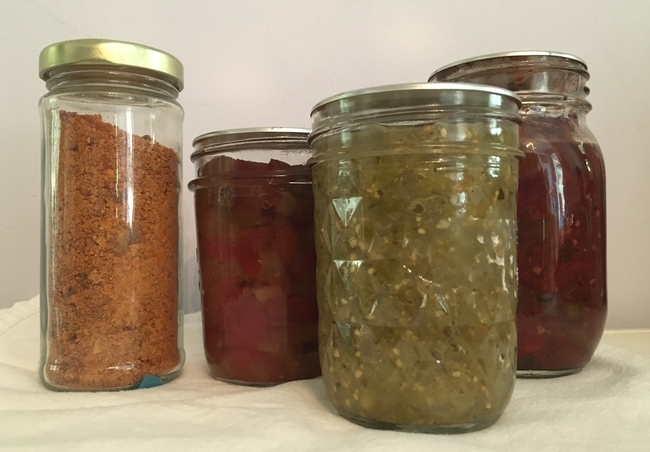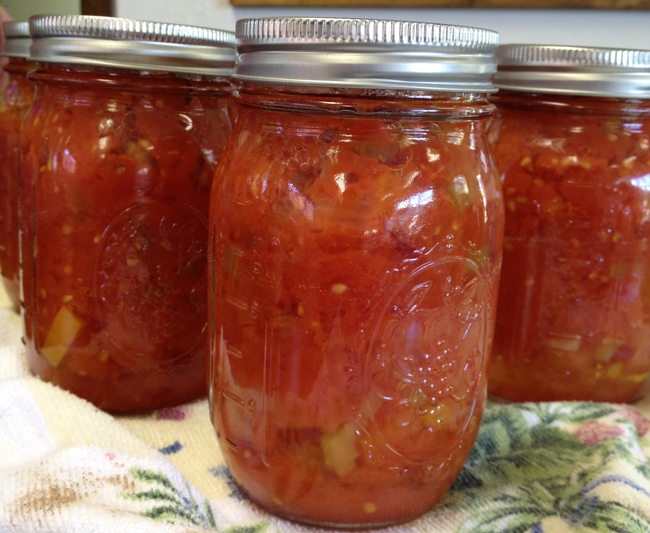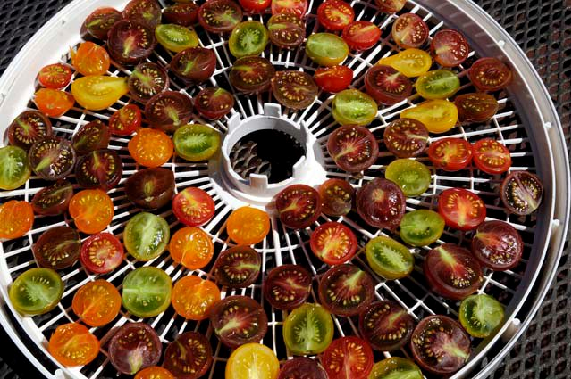
Posts Tagged: tomatoes
‘Containergeddon’ at ports cost California farmers $2.1 billion in exports
New research estimates economic losses due to congestion, inefficiencies
Between wildfires, drought, a trade war and the COVID-19 pandemic, the last few years have been hard on California farmers. But recent research by agricultural economists from UC Davis and the University of Connecticut suggests that economic losses to California agriculture from recent supply chain disruptions may have an even greater economic impact.
In an article titled “‘Containergeddon' and California Agriculture,” researchers estimate that there was a 17% decline in the value of containerized agricultural exports between May and September 2021, resulting from recent port congestion. This amounts to around $2.1 billion in lost foreign sales, which exceeds losses from the 2018 U.S.-China trade war.
By the peak of the disruption in September 2021, nearly 80% of all containers leaving California ports were empty – about 43% fewer filled containers leaving California's ports than there were prior to the pandemic. And since 40% of filled shipping containers leaving California's ports are filled with U.S. agricultural products – around a third of which are from California – farmers in the state experienced significant lost export opportunities.
By September 2021, there were around 25,000 fewer containers filled with agricultural products leaving California ports than there were in May 2021. Processed tomatoes, rice, wine and tree nuts saw the sharpest average trade declines.
“We calculated California tree nut producers lost about $520 million,” said Colin Carter, UC Davis Distinguished Professor of agricultural and resource economics. “This was followed by wine with a loss of more than $250 million and rice with about $120 million lost.”
During the pandemic, an increase in household savings led to increases in consumer spending, with many of these additional goods being imported from Asia. California ports were overwhelmed by the added shipping containers coming in from Asia. At times, bottlenecks at Southern California ports left more than 80 vessels waiting off the coast to unload. Docks and warehouses ran out of space and the turnaround time for shipping containers nearly doubled.
Increased U.S. demand for imported goods from Asia also led to increased demand for empty shipping containers in Asia. Prior to the pandemic, freight rates for shipping containers from Shanghai to Los Angeles were already higher than the return trip from Los Angeles, but this gap widened significantly after COVID-19. By September 2021, the fee to ship a 40-foot container from Shanghai to Los Angeles had increased sixfold to $12,000 – while the return trip from Los Angeles was only $1,400.
The high prices for containers from Asia, coupled with shipping delays from the high volume of imported goods entering California ports, made it more profitable for shippers to return containers to Asia empty, rather than waiting at the ports to have them loaded with U.S. exports for the return trip.
“If port inefficiencies persist, the ramifications for California agriculture will extend beyond the immediate loss of foreign sales, as importers begin to view California as an unreliable supplier of agricultural products,” Carter said.
To learn more about the supply chain disruptions at California ports, and their effect on California agriculture, read the full article by Colin Carter (Distinguished Professor in the Department of Agricultural and Resource Economics at UC Davis), Sandro Steinbach, and Xiting Zhuang (assistant professor and Ph.D. student, respectively, both in the Department of Agricultural and Resource Economics at the University of Connecticut): “‘Containergeddon' and California Agriculture,” ARE Update 25(2): 1–4. UC Giannini Foundation of Agricultural Economics, online at https://giannini.ucop.edu/filer/file/1640021835/20297/.
ARE Update is a bimonthly magazine published by the Giannini Foundation of Agricultural Economics to educate policymakers and agribusiness professionals about new research or analysis of important topics in agricultural and resource economics. Articles are written by Giannini Foundation members, including University of California faculty and Cooperative Extension specialists in agricultural and resource economics, and university graduate students. Learn more about the Giannini Foundation and its publications at https://giannini.ucop.edu/.
Root inhibiting herbicide injury on processing tomatoes
Root-inhibiting herbicides (like pendimethalin or trifluralin) are soil-applied and pre-plant incorporated as a standard practice for conventional processing tomatoes in the Sacramento Valley. Earlier this year, I visited a young processing tomato field with herbicide injury on a significant...

Tomato plant with herbicide injury (roots)
Field bindweed yield impacts on processing tomatoes may be less than expected
August 7, 2021 Field bindweed (Convolvulsus arvensis) is considered by many tomato growers to be the most problematic of all weeds in California production areas. Indeed, field bindweed and the closely related morningglory weeds were ranked the 8th most troublesome weeds in North America in a...
The potential threat of branched broomrape for California processing tomato: A review
From the California Agriculture 75(2):64-73. https://doi.org/10.3733/ca.2021a0012 ********** Abstract Branched broomrape (Phelipanche ramosa), a parasitic weed that was the focus of a $1.5 million eradication effort four decades ago in California, has recently re-emerged in tomato fields in...
Too many tomatoes?
If you also found a silver lining to staying/working at home this summer by planting and tending to your garden, did your wish for a bumper crop of tomatoes come true? What happens if your tomato plants are prolific producers?
Preserve those tomatoes!
The easiest way to preserve tomatoes is to freeze them. You don't need to blanch them, you don't need to peel them. Just rinse, dry, core, and put them on a small tray or plate in the freezer. Once frozen solid, move them to a freezer bag, removing as much air from the bag as possible before closing. Pull the bag out of the freezer when you're ready to use the tomatoes. To peel, let them thaw just a little and then run each tomato under warm water to slip off the skins. It's that easy. (They won't have the texture of a fresh tomato, but they'll be perfect to make a fresh sauce for dinner.)
Don't throw away those skins! Or soft tomatoes. If you have a dehydrator, lay tomato skins on the tray, sprinkle with your favorite spice mix (garlic salt works well), and dry until crispy to make a tomato skin chip. Some heirloom tomato skins are bursting with flavor. Or instead of making chips, toss tomato skins and soft tomatoes into a freezer bag until you fill the bag. Thaw and puree the bag's contents and dry the mixture on your dehydrator tray as a crisp leather. Grind up the leather to make a tomato powder to use for camping soup mixes and dehydrated salsa mix. Sprinkle tomato powder on scrambled eggs for tomato flavor without the extra moisture or add to meatloaf, burgers or soups to enhance flavor. Get creative!
If you're a canner, there are lots of options. Many people don't think of tomatoes as a basis for jam or jelly, but with the right spices and some sugar, the flavor profile changes significantly. I served Spiced Tomato Jam in a blind taste test with third-graders a few years ago and they guessed it was apple pie and pumpkin pie because of the nutmeg, cinnamon and allspice. It's delicious!
A family favorite is Tomato Apple Chutney. This savory spread is a collection of tomatoes, apples, onions, raisins, garlic, cucumber, red bell peppers, a little sugar and spices. I like to mix it with mayonnaise for a sandwich spread. The first time I made it my husband and I ate sandwiches for lunch and dinner three days in a row. It is one of the first red tomato products I can each summer.
Another family favorite is Roasted Eggplant and Pepper Puttanesca Sauce. The combination of roasted plum tomatoes, eggplant, onions and red peppers with capers, olives, spices, balsamic vinegar and wine make a chunky pasta sauce that smells fabulous when you open the jar. I usually make 3-4 batches and enjoy them all year.
My pantry staple is plain crushed tomatoes. I add spices when I make a meal, cooking them down, adding tomato paste (remember the tomato powder?) and dried veggies. Each jar of crushed tomatoes can become part of a unique meal. The main thing to remember is to add acid to each jar before filling it to ensure there's enough acidity to make the tomatoes a high acid food and safe to can in a steam canner or boiling water canner. I normally use bottled lemon juice, but this year I'm trying a few jars with cider vinegar; rumor has it that after being stored for several months the vinegar flavor mellows and enhances the flavor. I'll label the jars to identify the acid used.
I learned a great tip at one of our public classes a couple of years ago. Often when canning tomatoes, there's watery liquid at the bottom of the cook pot. Don't throw out the tomato water! You can jar and process it with the rest of your crushed tomatoes. Use the tomato water to cook couscous, quinoa, rice or as the liquid in a soup.
This is the first year I've actually put my garden in on time and shouldn't have plants loaded with green tomatoes right before the first freeze. If I do, I'll be thrilled because I'll make Green Tomato Salsa Verde – it's delicious! (It ranks up there with Tomatillo Salsa; I've already made three double batches and plan to make more.) Green tomatoes are more acidic than ripened tomatoes and you can use them in place of red tomatoes in any canning recipe, following standard acidification methods.
I just picked a cherry tomato off the potted plant on my back patio that is purposely within easy snacking distance from my kitchen. If I get too many to eat within a couple of days I'll cut them in half and dehydrate them. The result is as good as candy.
So many tomato possibilities! If you want more ideas, contact the UC Master Food Preserver online help line at Ask a Master Food Preserver.
Visit our website at http://mfp.ucanr.edu/to watch a variety of preservation videos from Cooperative Extension offices around the country, explore recipes, and find out more about the UC Master Food Preserver Program.


